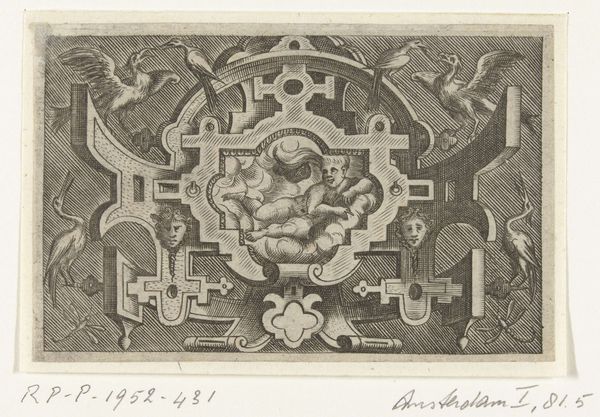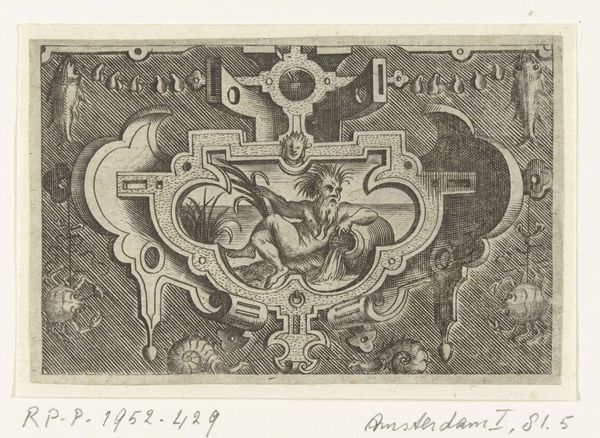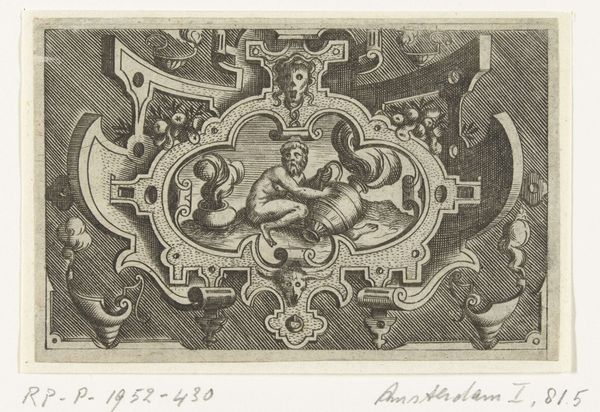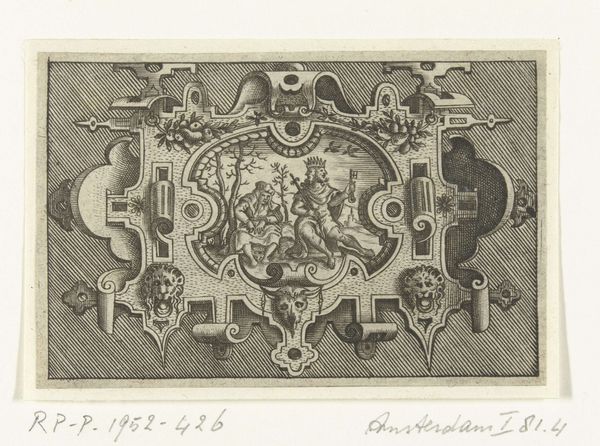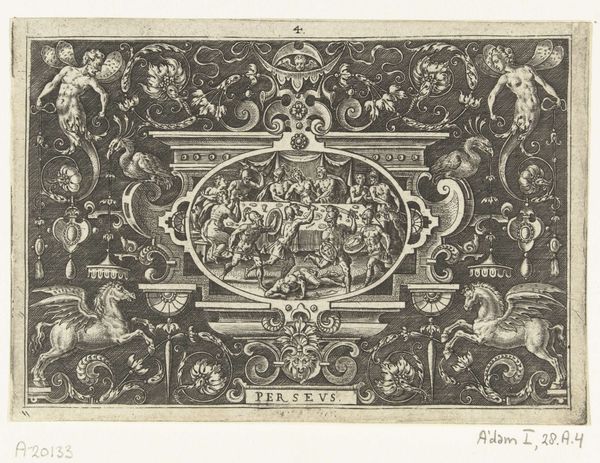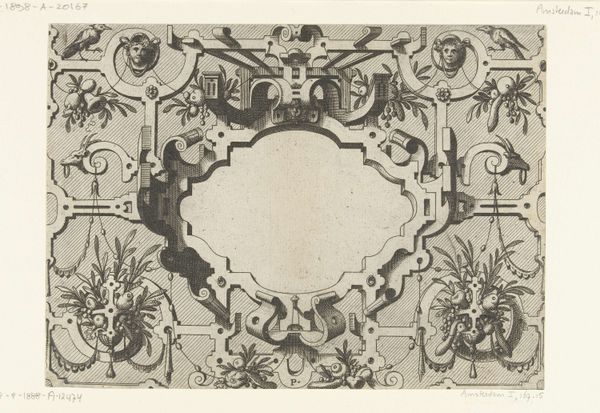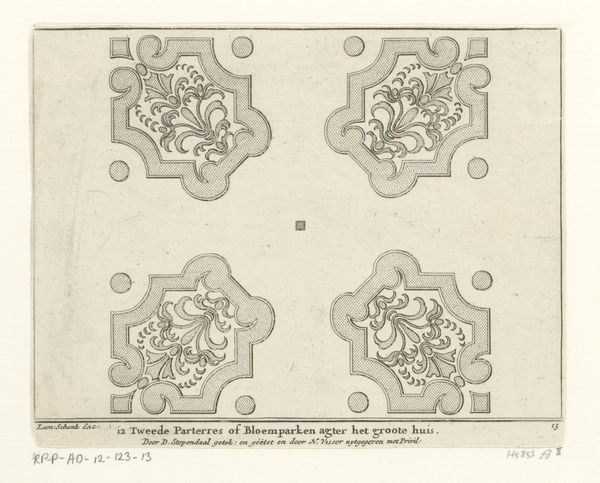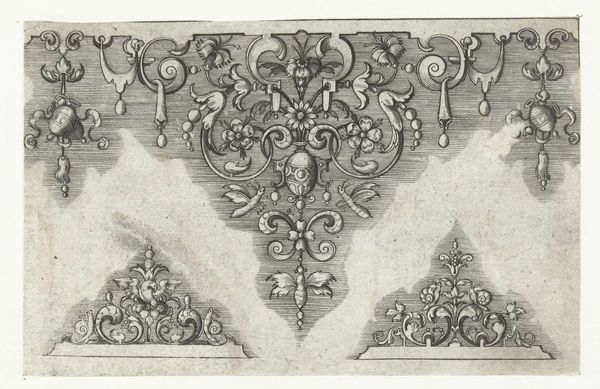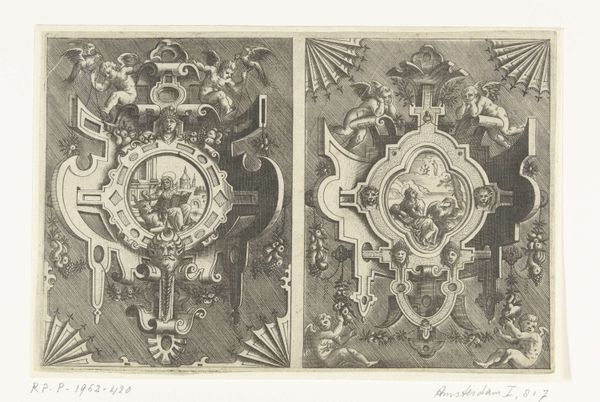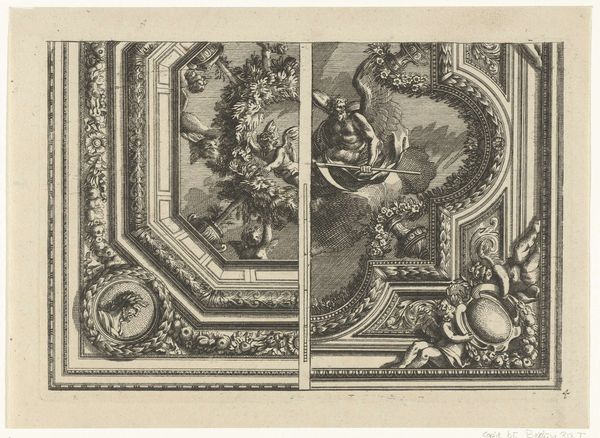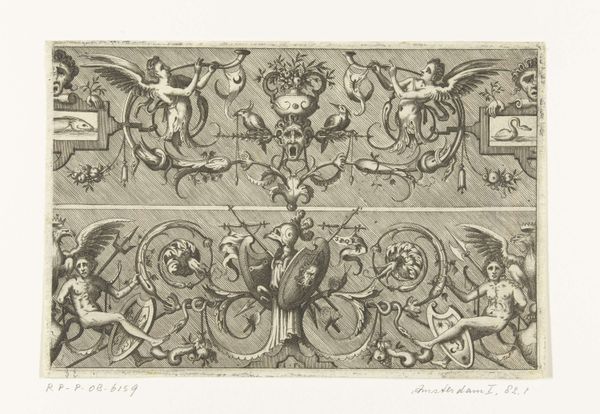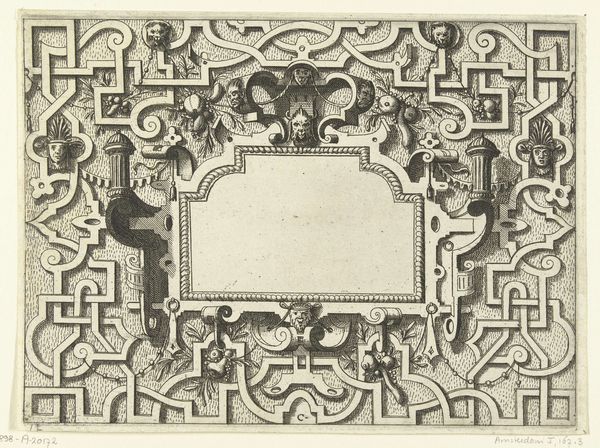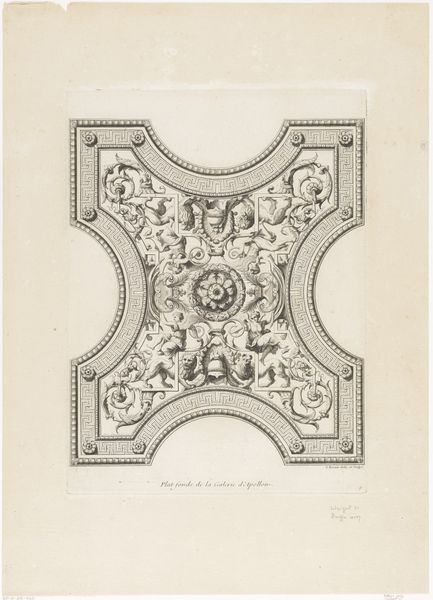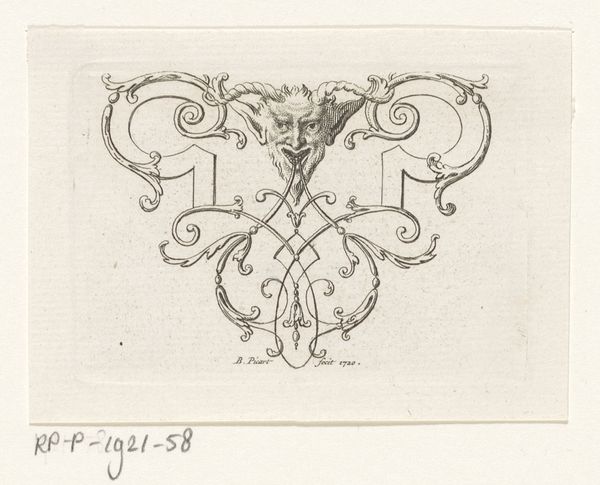
print, engraving
#
allegory
# print
#
old engraving style
#
mannerism
#
history-painting
#
engraving
Dimensions: height 67 mm, width 103 mm
Copyright: Rijks Museum: Open Domain
This small engraving, depicting the element of Earth, was created by Pieter van der Heyden in the mid-16th century. It is made using the intaglio process, meaning that the image was incised into a metal plate, likely copper, with tools called burins and gravers. The plate would then have been inked, and the surface wiped clean, leaving ink only in the etched lines. As you can see, the act of engraving allows for incredible precision. Look closely, and you will see how the composition is built up from thousands of tiny cuts into the metal. This painstaking labor is what creates the tonal range, and also imbues the print with its distinctive graphic quality. It's no accident that engraving emerged as a key medium just as early capitalism was taking hold in Europe. The same qualities that made it attractive for artistic reproduction also suited it perfectly for banknotes, maps, and commercial illustrations. Ultimately, considering both the image and the mode of its production, an engraving like this one is a testament to human skill and ingenuity, as well as the growing power of commerce in the early modern world.
Comments
No comments
Be the first to comment and join the conversation on the ultimate creative platform.
